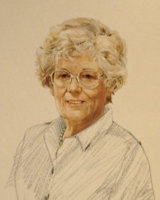2008 will be the Year of the Printed Word and it’s being celebrated by various events with the promotion of The National Library of Scotland and the Scottish Printing Archival Trust, with backing from the Scottish Executive. With the importance of printing to Lymond and of course the overwhelming importance of books to all of us as readers I thought you’d all be be very interested in the following from the new site at http://www.500yearsofprinting.org
Today, 15 September 2006, sees the 499th anniversary of the granting of a patent by James IV, King of Scots, to Androw Myllar and Walter Chepman authorising them to set up a printing press in Edinburgh – the first in Scotland. The earliest known output from their press – ‘The Complaint of the Black Knight – is dated 4 April 1508. The National Library of Scotland and the Scottish Printing Archival Trust is jointly promoting the 500th anniversary of this publication in 2008.

 Anyway back to Midculter. When, years ago, I first read the description, I was confused. It didn’t quite feel right but I couldn’t put my finger on exactly why, and being swept along with the narrative I forgot about it. Much later I took a bit more time to analyse it.
Anyway back to Midculter. When, years ago, I first read the description, I was confused. It didn’t quite feel right but I couldn’t put my finger on exactly why, and being swept along with the narrative I forgot about it. Much later I took a bit more time to analyse it. Yet a look at the map (Ordnance Survey Landranger 1:50,000 Sheet 72 – Upper Clyde Valley) shows that Biggar lies to the north, not east, of the few remaining stones of Boghall castle. Likewise the lovely Tinto Hill lies to the west (in fact slightly south of west) and definitely not to the north. It is almost as if the compass has been turned through about 75-90 degrees. The final description in that piece tells us where Midculter is. Given the skewed compass heading it makes sense to put Midculter in the SSW direction – and indeed that is where both Culter Water and the village of Coulter lie.
Yet a look at the map (Ordnance Survey Landranger 1:50,000 Sheet 72 – Upper Clyde Valley) shows that Biggar lies to the north, not east, of the few remaining stones of Boghall castle. Likewise the lovely Tinto Hill lies to the west (in fact slightly south of west) and definitely not to the north. It is almost as if the compass has been turned through about 75-90 degrees. The final description in that piece tells us where Midculter is. Given the skewed compass heading it makes sense to put Midculter in the SSW direction – and indeed that is where both Culter Water and the village of Coulter lie.